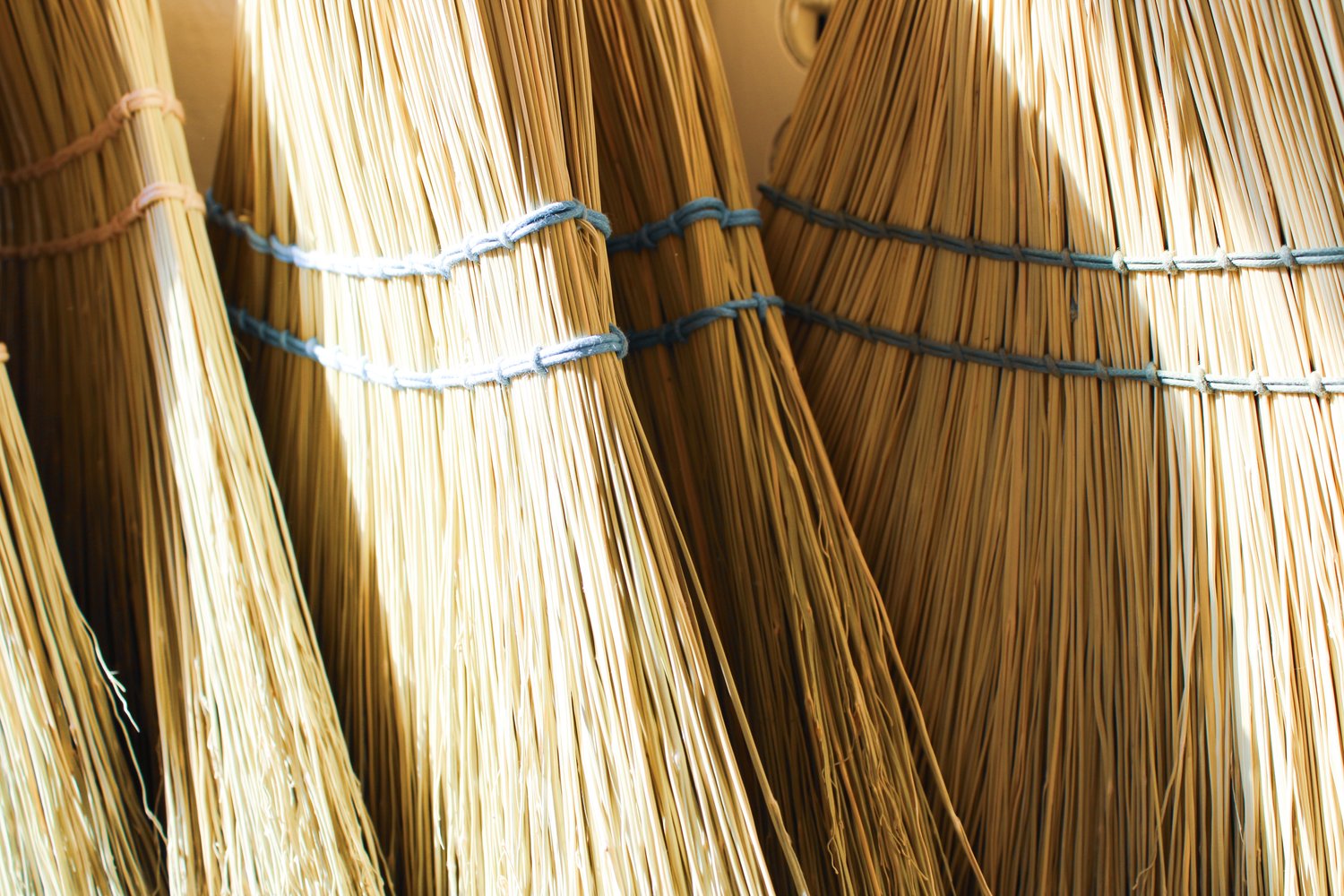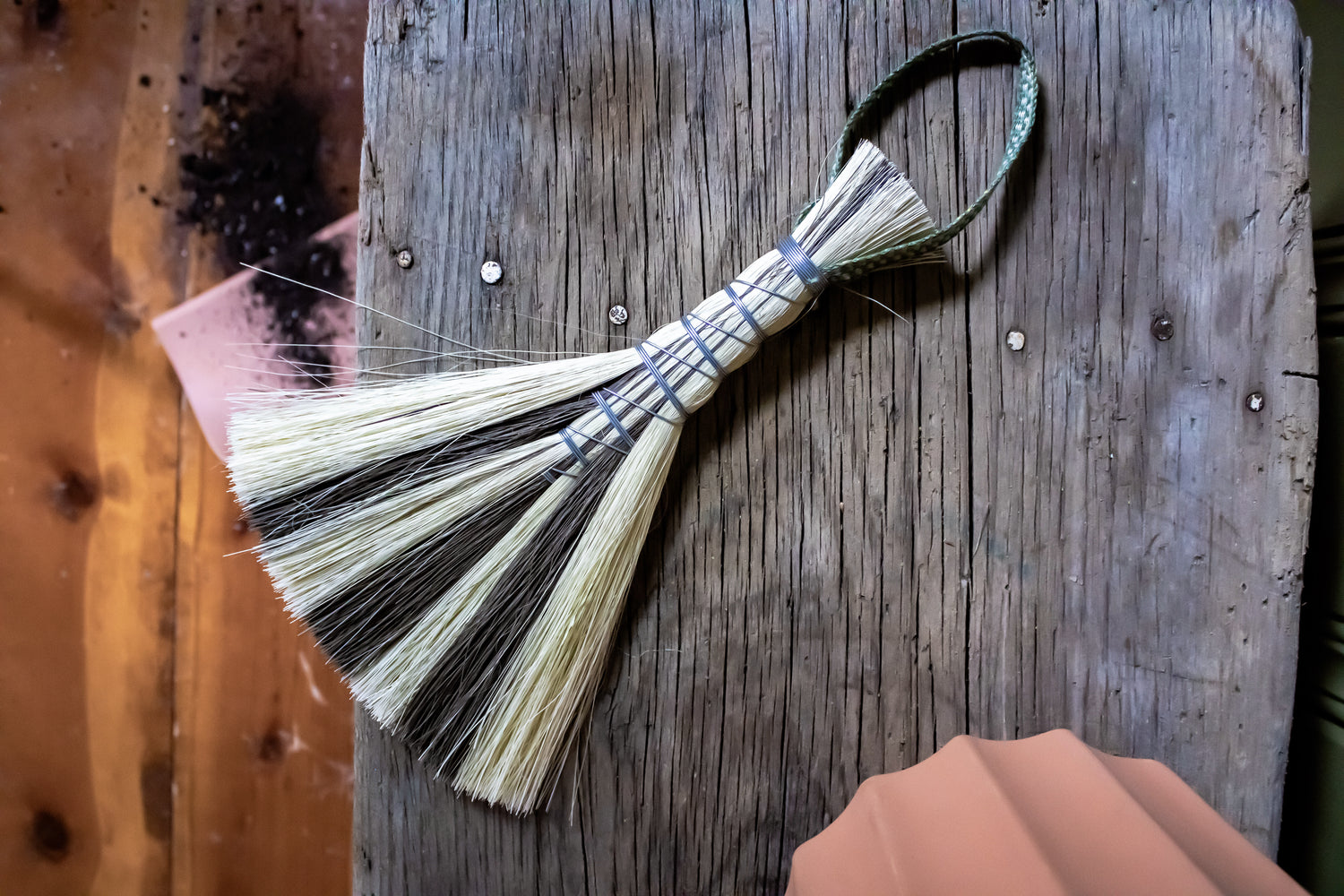
FAQs
Brooms and Brushes
Collapsible row
Wow! What are these made of?
We use a hemp linen, or leather for the binding on all of our brooms: The fibers themselves the brooms are made of are either Tampico, which is an agave plant or broom corn, which is a type of sorghum.
Do you grow it yourself?
Were working on it! We have partnered with two farmers in Kentucky to grow part of our broom corn crop. The processing is still our production bottleneck, which we hope to solve so that all our broom corn is grown in Kentucky. In Cynthia’s previous life, she farmed organic sorghum, and works closely with our farming partners to share best practices on growing this crop.
Our Tampico fiber is sourced from a sustainable wildcrafting collective that profit shares in Mexico. We are very excited to work with them as our harvesting partner, and look forward to sharing more of their methods and practices with you over the years.
What about the chord?
We have spent years transitioning from Nylon to natural fibers: both transitioning our designs to create a product that could handle the lighter tension of natural fibers, introducing Tampico to brush tying, and road testing string after string to find something of quality that works. We have our eyes on hemp production, a traditional crop here in Kentucky (the last processing mill closed in 1957) and will look into resurrecting that aspect of our supply chain after our broom corn is all grown here in Kentucky.
Wooden Wares
How do I clean and maintain my board?
It’s actually a very simple process! We know that you worry about damaging your beautiful boards but with proper maintenance they will last a lifetime. We recommend rinsing the board with a mild soap and warm water making sure to scrub the surface of all food particles. Do not soak the board in water, as it can cause warping. And most importantly DO NOT PUT THE BOARD IN THE DISHWASHER. Immediately dry the board with a clean cloth and allow to dry standing on end or in a dish rack. If the board has stubborn smells or staining, you can use white vinegar or lemon juice to remove the stain and odor.
How do I apply oil and board butter?
After you have cleaned your board you can apply oil directly to the entire surface of the board. Don’t be afraid to use liberally, the oil will soak in and protect the wood from contaminants soaking into the board. Many companies use food grade mineral oil, but we prefer to use DOCTORS WOODSHIP WALNUT OIL. It is specially formulated to be Hypo-allergenic and will dry fully. Regular walnut oil may become rancid over time. Mineral oil is food safe but we do not feel good about putting a petroleum byproduct on our products. Typically we only use oil when the board has become dry from a lot of use. Once again you will want to let the oil fully soak in and dry on end or in a dish rack.
Next step will be to apply board butter. We use a mixture of approximately 4 to 1 bees wax and organic coconut oil. This is a very easy mixture to make at home, but we do offer it on our website. Take a clean rag and apply the butter to the entire board working it in a circular motion. This extra layer of protection will prevent liquids from soaking into the wood and also fills and cuts or scrapes on the woods surface providing a more sanitary surface. Allow it to dry and wipe off any excess wax. Board butter also adds a shine to the wood, making it look like new!
Where do you get such beautiful lumber?
Our friends at Saw Whet Hardwoods in Louisville Kentucky source their logs from Louisville tree services that were otherwise destined to be chipped or burned. These beautiful urban trees give each of our boards the one of a kind characteristics that make our lumber so special.
But it's so beautiful. I'm scared to even use it!
Use it! We are all about beauty in the everyday. These products were designed for daily use, and we guarantee their construction for life, so do it, enjoy yourself!
The Shop
Can we visit you?
Yes! We are open Thursdays through Saturdays, 12–6pm. We may be available to make brooms to go, other than that we are here to talk to you about our craft, but are not in production during those hours.
Do you use recycled packaging, pay fair wages, work in a lovingly restored storefront, employ traditional methods in your craft, source as locally as possible in all matters, and help develop a supply chain as well?
Of course! We love it here.
Can we work for you?
We do post job openings on occasion, typically for part-time positions. Feel free to contact care@sunhousecraft.com for inquiries.
Have another question, write us at hello@sunhousecraft.com. We’re excited to connect over a love of crafting together and connect with you!


